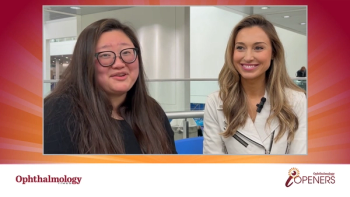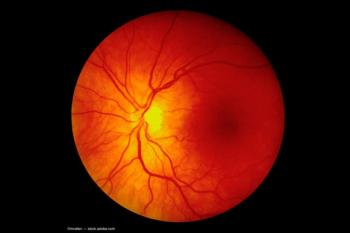
Intravitreal triamcinolone: Managing DME and increasing vision
The improvement became evident during an average time of 6 months.
Francesco Saverio Sorrentino, MD, from the Department of Surgical Sciences, Unit of Ophthalmology, Ospedale Maggiore, Bologna, Italy, reported that intravitreal injection of. preservative-free triamcinolone acetonide (Taioftal, Sooft Italia S.p.A.) was safe and effective for improving vision and reducing the central foveal thickness (CFT) in patients with diabetic macular edema (DME). The improvements became evident during an average time of 6 months.
This conclusion was based on the results of a prospective clinical study1 of 49 patients (49 eyes) treated with Taioftal. All patients underwent imaging at baseline and 1, 3, and 6 months after the intravitreal injection of 4 mg/0.05 ml of the drug.
The investigators measured the best-corrected visual acuity (BCVA), CFT, intraocular pressure (IOP), and adverse events to evaluate the treatment effect on vision and macular morphology before and after treatment. All patients were followed for 6 months.
Effect of triamcinolone acetonide
The investigators reported that the median BCVA improved significantly at each evaluation. Compared with the baseline value, the patients had a 6-letter gain at 1 month and 12 letters at 3 months, which represented a 24% gain at 3 months that remained stable to 6 months compared to baseline, a difference that reached significance (p<0.05).
The median CFT decreased significantly at each time point, i.e., a decrease of about 65 microns at 1 month and 155 microns at 3 months, which was a decrease of up to 28% that was maintained out to the 6-month time point, a difference that also reached significance (p<0.05).
The IOP did not increase markedly but was the most frequently observed adverse effect.
Based on their results, the investigators believe that “intravitreal triamcinolone acetonide is an effective, safe, and inexpensive drug used to improve VA and reduce CFT in eyes affected by DME during an average time of 6 months.”
They pointed out that temporary but never severe IOP elevations were manageable with topical medications. No serious vision-threatening complications are related to the use of intravitreal triamcinolone injections.
Reference
Sorrentino FS, Bonifazzi C, Parmeggiani F. Diabetic macular edema: Safe and effective treatment with intravitreal triamcinolone acetonide (Taioftal). PLOS One. Published online October 1, 2021;
https://doi.org/10.1371/journal.pone.0257695
Newsletter
Don’t miss out—get Ophthalmology Times updates on the latest clinical advancements and expert interviews, straight to your inbox.













































